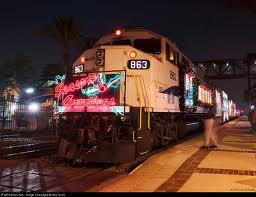If your holiday plans happen to include taking the train to another city, you're in good company. As has been widely reported, Amtrak has broken ridership records throughout the year. A total of 31.2 million passengers boarded Amtrak trains in the fiscal year that ended September 30; that's an increase of 3.5 percent over the previous year.

What's also interesting, as reported by our friends at All Aboard Ohio, is that as more people opt for intercity trains, highway driving is dipping and air travel is losing ground.
Over the past 12 years, Amtrak ridership has grown 46 percent [PDF]. Meanwhile, highway travel -- excluding freight -- is down 7 percent over that time. Total plane boardings grew just 3 percent over the same period, compared to U.S. population growth of 12 percent.
All Aboard Ohio's Ken Prendergast points to the increased costs of driving as a major factor:
The costs of driving rose 54 percent from 32.5 cents per mile in 2000 to 50 cents in 2010. It climbed higher in 2012, to 55.5 cents per mile.
Amtrak President and CEO Joe Boardman credited increased investments in the nation's passenger rail system with propelling the trend. With funding from President Obama's $8 billion high-speed rail initiative, routes like St. Louis-to-Chicago and Detroit-to-Chicago are undergoing significant improvements that are likely to entice additional passengers.
Boardman also cited the popularity of WiFi service, available on more and more trains.
Commenting on the trend earlier this year, the New York Times pegged the hassles that come with flying -- increasing delays, more stringent security measures, and rising costs -- as another factor.
And while the Times focused on Amtrak’s most highly traveled route -- the Northeast Corridor, which saw a 4.8 percent ridership jump -- it's also worth noting that many lower-profile lines enjoyed similar, or in some cases even larger, percent increases.
The number of passengers on St. Louis-to-Chicago routes went up 11 percent last year. North Carolina's Piedmont corridor, serving Charlotte and Raleigh, enjoyed the highest annual increase in the system, at 16.2 percent. Even long-distance routes saw impressive growth. On the Texas Eagle, between Chicago and San Antonio, boardings were up 12.8 percent to almost 338,000 [PDF].
Amtrak takes a lot of heat -- especially from the current House of Representatives -- because it's subsidized. But clearly, Amtrak is providing a service that -- for a variety of reasons that don't seem likely to reverse themselves anytime soon -- a growing number of Americans find appealing.





